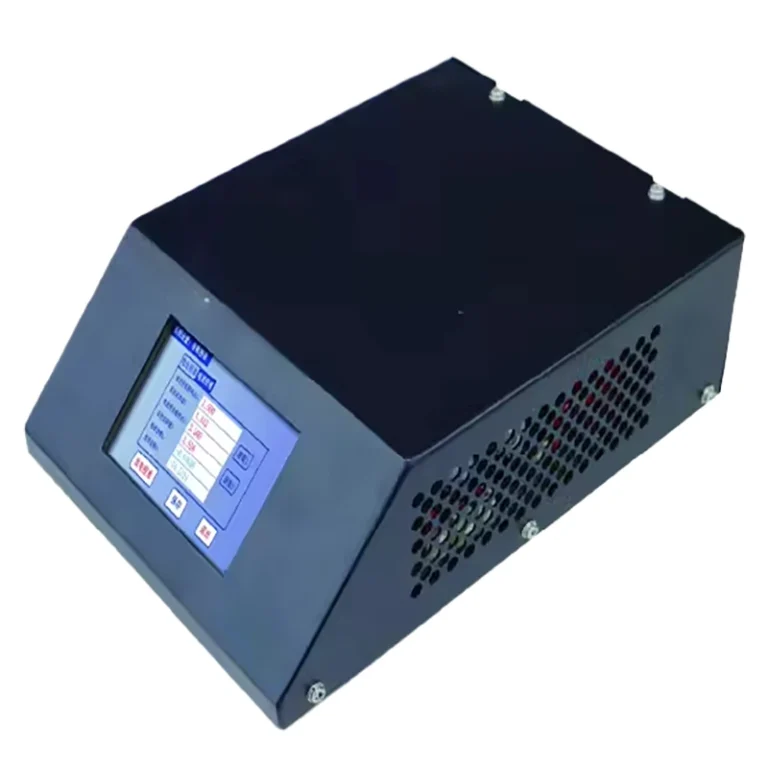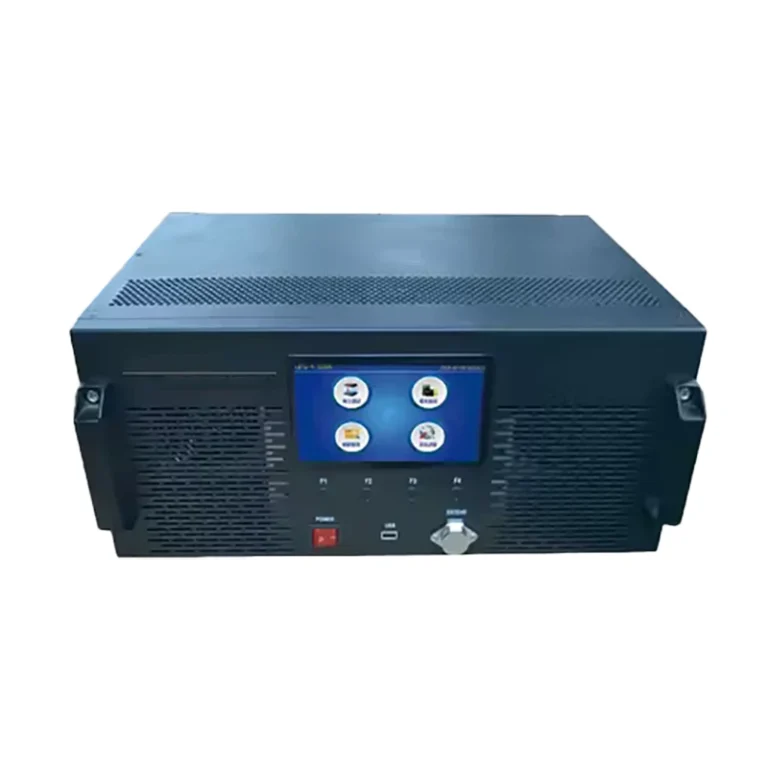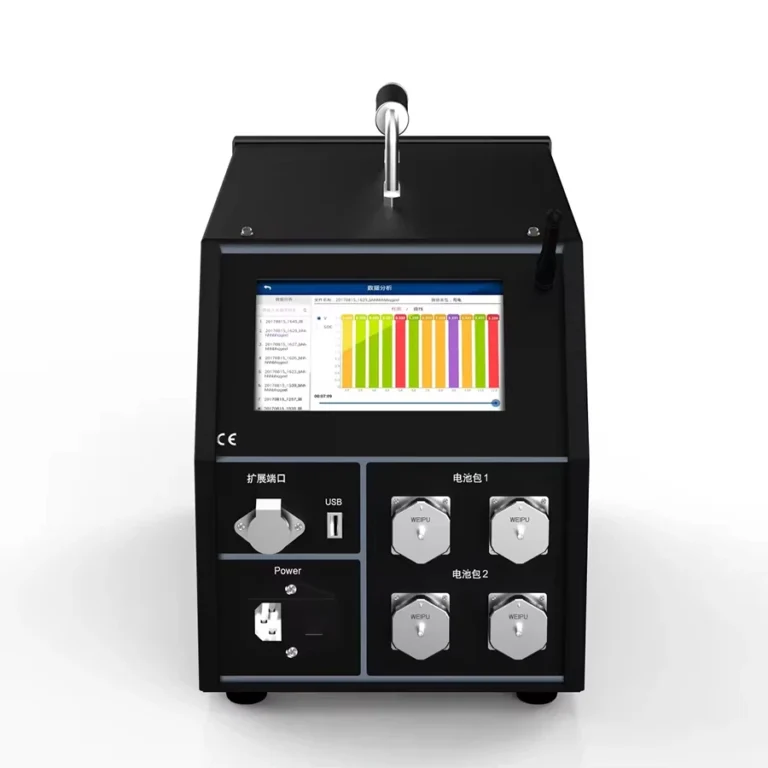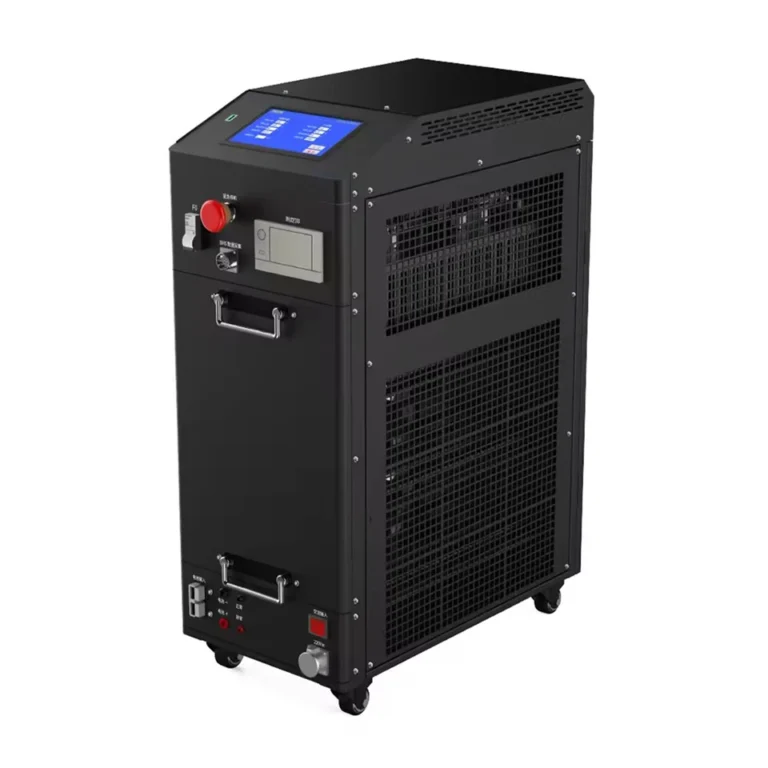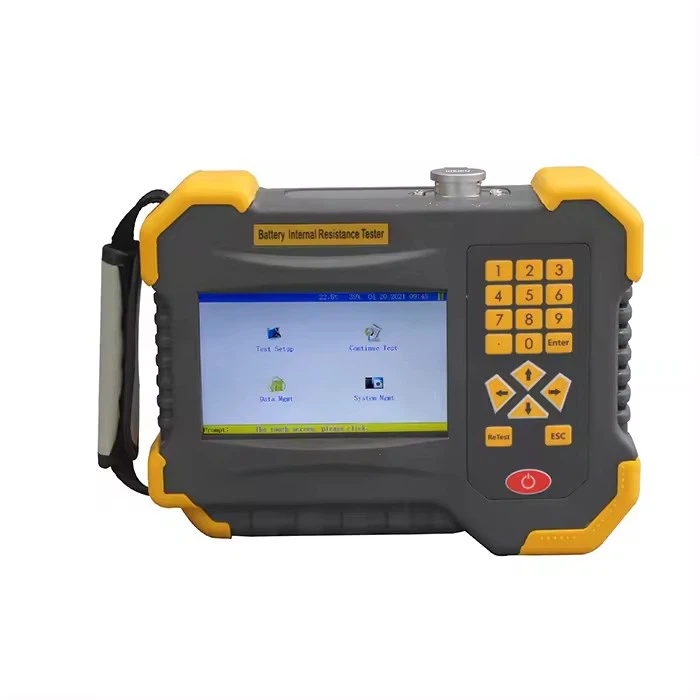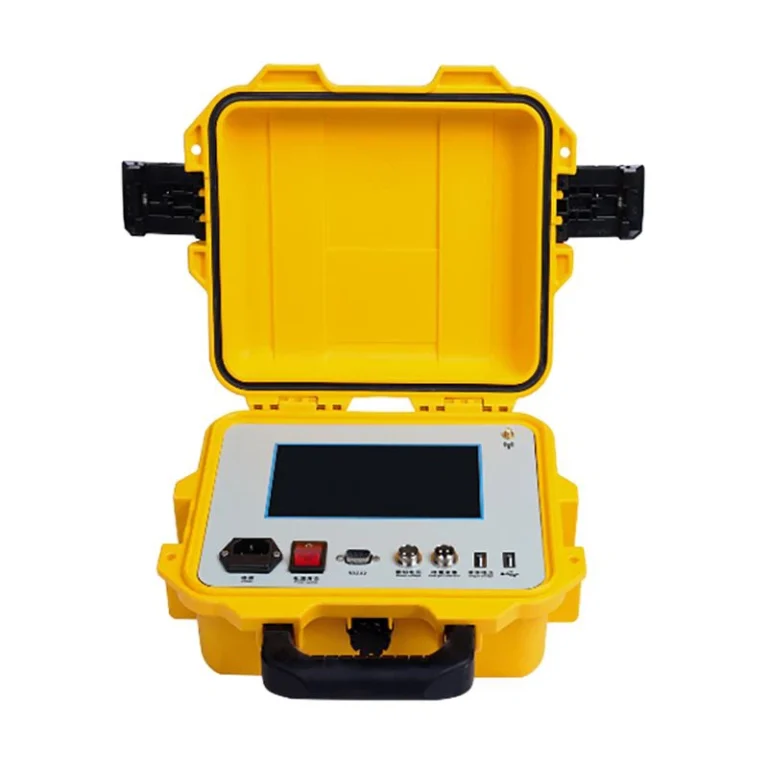DC system and battery testing
As a manufacturer of Battery Testing Equipment, Wrindu has established a mature team covering all aspects of R&D, production, sales, and service after more than ten years of development. Currently, we provide high-quality Transformer Testing Equipment, oil testing equipment, Relay Protection Tester, and other testing equipment to the power industry in more than 50 countries, including the Ethiopian Electric Power Company, Uganda Electric Power Company, and Dubai Electricity Company. In addition to our own brand products, we also offer professional OEM and ODM customization services tailored to our customers’ specific needs. For more product information or any special requests, please feel free to contact us. We are committed to providing you with professional pre-sales and after-sales services.
What is Battery Testing Equipment ?
The power system serves as a critical infrastructure in modern society, and its stability and reliability are directly linked to the normal operation of all sectors. Within this system, DC systems and battery testing equipment play an irreplaceable role. They act as the “health guardians” of the power system, ensuring a stable supply of DC power and the reliable performance of batteries.DC systems play an extremely crucial role in the power system by providing stable electrical power to protective devices, control circuits, and communication equipment. However, potential faults in DC systems are often difficult to detect, and when issues arise, they can have a significant impact on the entire power system. In such cases, the DC system fault tester becomes particularly important as it can accurately detect and locate potential problems within the system, ensuring the continuous and reliable operation of the power system.Battery testing instruments are key tools for maintaining battery performance. These devices not only detect and evaluate battery performance but also facilitate maintenance to ensure that batteries can serve as backup power sources when needed. This is especially critical during peak power demand or extreme weather conditions when a stable power supply from batteries is essential for compensating for power shortages and balancing supply and demand.The innovative application of the battery online charging and discharging tester has addressed the safety issues associated with traditional offline discharge. This multifunctional device integrates online discharge, offline discharge, charging, full battery activation, and individual cell monitoring, thereby enhancing the utilization rate of batteries and strengthening the flexibility and stability of the power grid. Such equipment enables us to respond swiftly to uncertainties such as power outages, natural disasters, or technical failures, ensuring uninterrupted power supply.
What are advantages of Battery Testing Equipment ?
Comprehensive Testing Capability
Exceptional adaptability to seamlessly interface with battery packs of varying voltage levels. Whether it’s providing power for small portable devices with low-voltage batteries or driving electric vehicles with high-voltage batteries, our equipment can perform comprehensive discharge, charge, and cycle tests. This comprehensive testing capability greatly optimizes the maintenance process, reduces initial equipment procurement costs, and enhances the efficiency and adaptability of testing laboratories, offering a convenient one-stop solution for testing batteries of different specifications.
Precise and Efficient Energy Management
Our equipment is equipped with cutting-edge energy management technology, including efficient power electronics conversion modules and precise current control algorithms. The application of these technologies ensures the smooth and controllable release of battery energy during discharge and allows for charging at the most appropriate rate, effectively reducing charging time and preventing battery damage due to overheating or excessive current, thereby significantly extending battery life and performance.
Intelligent Balancing Technology
The modern battery testing equipment features an intelligent balancing system with the ability to monitor and adjust the voltage of each battery cell in the pack in real-time. Through this active current regulation mechanism, the system ensures that the voltage of all battery cells remains balanced, effectively preventing overcharging and overdischarging of the cells, and enhancing the overall performance and stability of the battery pack. This provides a solid technical guarantee for applications such as electric vehicles that have high safety requirements for batteries.
High-Voltage Rapid Discharge Capability
Our battery testing equipment is designed to meet the special needs of high-voltage lithium battery packs, with the capability to rapidly discharge up to 800V. This meets the needs of battery manufacturers and automotive assembly plants for high-performance battery handling. During storage, transportation, maintenance, and recycling of batteries, this capability can quickly reduce the voltage of the battery pack, significantly improving operational efficiency and safety.
Types of Battery Testing Equipment
Lithium Battery Equalization Tester
Lithium battery equalization testers are essential tools for maintaining and enhancing the performance of lithium-ion battery packs. These devices monitor and balance the voltages of individual cells within the battery pack to prevent voltage discrepancies that can reduce the battery’s lifespan. By adjusting the voltage through discharge or charge, they ensure each cell operates within safe parameters, leading to more consistent and efficient battery performance. This balancing technology also addresses the common issue of voltage and capacity inconsistencies that can occur during charging and discharging cycles, which can significantly impact battery life. The testers play a critical role in ensuring the smooth operation and longevity of lithium-ion batteries, particularly in high-performance applications like electric vehicles and mobile devices.
Lithium Battery Discharge-Charge Unit
Lithium battery charging and discharging equipment, commonly referred to as charging and discharging equipment, is specifically designed for the charging and discharging of lithium batteries. Their core function is to efficiently input or output electrical energy into the battery for charging or release it from the battery. These devices not only have power conversion capabilities but also incorporate intelligent control technology, allowing for precise regulation of charging current, voltage, and time to ensure both safety and efficiency during the charging and discharging processes.
Charging and discharging equipment primarily consists of a power control system, a charging and discharging system, and an instrumentation system. These three components work together to ensure precise control of each charging and discharging process, achieving optimal energy conversion efficiency. The power control system selects and controls charging/discharging parameters based on different modes to ensure that the equipment completes the charging and discharging process in the most optimal way within a limited time frame. The charging and discharging system, based on the parameters set by the control system, outputs the corresponding charging/discharging current to the lithium battery while maintaining voltage equilibrium. The instrumentation system monitors the status of the battery cells and adjusts the parameters of the control system based on the data to ensure the accuracy and safety of each charging and discharging process.
Battery Regenerator
The Battery Smart Activation Instrument is a portable solution designed for daily maintenance to enhance the performance and extend the lifespan of underperforming batteries. With three distinct modes – discharge, charge, and activation – it can be customized to address the specific needs of various underperforming batteries.
The discharge mode assesses battery capacity, the charge mode employs low-voltage constant current to revitalize batteries, and the activation mode performs repetitive charge-discharge cycles to activate inactive substances and boost capacity.
This device offers a cost-effective alternative to battery replacement, especially for high-value items, and it plays a crucial role in battery maintenance, preventing early deterioration. Additionally, its environmentally friendly design reduces waste and minimizes environmental impact by restoring batteries instead of disposing of them.
Battery Load Bank
The DC Battery Load Bank is an integrated testing tool designed to optimize battery performance and extend battery life. It achieves this by precisely controlling the charging and discharging process, preventing overcharging or undercharging of the battery, which in turn reduces the cost of expensive downtime. The remote monitoring and alarm functions ensure that the battery can maintain its optimal working state even when unattended. By simulating real load conditions for charging and discharging tests, the DC Battery Load Bank not only validates the battery’s performance and capacity but also ensures its reliability and efficiency in practical applications. Furthermore, the data collection and analysis capabilities of the DC Battery Load Bank allow users to monitor the battery’s status in real-time. In the event that battery performance parameters exceed preset thresholds, timely measures can be taken, further ensuring the safety and efficiency of the battery.
Battery Impedance Tester
The battery internal resistance tester is an indispensable tool in battery maintenance technology, specifically designed to measure the internal resistance of batteries. This is crucial for maintaining the battery’s effectiveness and ensuring its efficient use. The instrument plays a significant role in battery performance and longevity. Internal resistance refers to the resistance within a battery that impedes the flow of current during discharge or charging. The size of this resistance directly impacts the battery’s performance and lifespan, making accurate measurement of internal resistance essential for the development, production, and quality control of batteries.
The battery internal resistance tester is a critical instrument in battery maintenance, helping maintenance personnel and engineers to identify battery issues promptly, thereby avoiding equipment failures and extending battery life. By using the internal resistance tester, it is possible to effectively monitor the battery’s performance, detect problems early, and perform appropriate maintenance. The working principle of the internal resistance tester and its role in battery maintenance are crucial for ensuring the normal operation of equipment.
DC Ground Fault Finder
The DC grounding fault locator plays a crucial role in the maintenance of power systems, with its primary function being to quickly and accurately locate grounding faults in the DC system to maintain system reliability and stability. This device operates without the need to disconnect power, precisely identifying the grounding point with a 100% accuracy rate. It adheres to high industry standards, utilizing low-frequency signals for detection while ensuring no negative impact on the power system. The DC system is vital for the power supply of control, protection, signaling, and automatic equipment in power plants and substations. Grounding faults can lead to misoperation or refusal to operate, potentially causing severe accidents. Therefore, the role of the DC grounding fault locator is to ensure the normal power supply of the DC system while swiftly detecting and resolving grounding issues, preventing the potential risks associated with double-point grounding, and ensuring the safe and stable operation of the power system.
Application of Battery Testing Equipment
Battery Performance Testing and Evaluation
In power systems, the battery charge-discharge tester plays a crucial role in conducting comprehensive testing and evaluation of battery performance. By simulating actual working conditions, the tester can accurately measure key parameters such as capacity, internal resistance, cycle life, and charging efficiency of the battery. These data are vital for assessing whether the battery can meet the emergency power supply needs of the grid during a power outage. Additionally, regular testing can detect subtle changes in battery performance, providing a basis for preventive maintenance and ensuring the stable operation of the power system.
Battery Maintenance and Management
The battery charge-discharge tester is an essential tool for the maintenance and management of battery packs. By conducting regular charge-discharge cycle tests, the tester can monitor battery characteristics such as charging acceptance, discharge rate, and recovery ability. This information helps maintenance personnel identify underperforming battery cells, enabling timely equalization charging or replacement to prevent the entire battery pack from being affected by a few bad cells. In the long term, this maintenance strategy helps extend the lifespan of battery packs and reduces overall maintenance costs.
Battery Pack Uniformity Testing
In power systems, the uniformity of the battery pack is directly related to the stability and reliability of the system. The charge-discharge tester can accurately measure the voltage, internal resistance, and capacity of each individual cell, thereby assessing the consistency of the battery pack. Through this testing, any imbalances caused by battery aging or manufacturing differences can be detected and resolved promptly, ensuring that the battery pack provides a stable power supply during emergencies.
New Battery Acceptance Testing
For newly installed battery packs, the charge-discharge tester is a key device for acceptance testing. A series of rigorous charge-discharge cycles can verify whether the new battery pack meets the performance standards claimed by the manufacturer, including capacity, internal resistance, and charge-discharge times. These test results provide important assurance for the stable operation of the power system.
Battery Management System (BMS) Calibration
The battery charge-discharge tester can also be used to calibrate the functionality of the Battery Management System (BMS). By simulating different charge-discharge scenarios, the tester can evaluate the BMS’s ability to monitor and control battery status, ensuring that the BMS responds accurately in real-time monitoring of the battery pack, thus protecting the batteries from damage and extending their lifespan.
System Fault Analysis and Diagnosis
When a fault occurs in the power system, the battery charge-discharge tester can provide in-depth data analysis to help engineers diagnose the cause of the fault. By comparing test data before and after the fault, it is possible to identify whether the issue lies with the battery itself or another part of the system, providing decision support for the rapid restoration of the power system.
Power System Reliability Research
Utilizing the extensive data collected by the charge-discharge tester, researchers can conduct in-depth studies on power system reliability. These studies help optimize battery configuration plans, improve operating strategies, and enhance the power system’s resilience to risks and reliability of power supply.
Emergency Response Drills
During emergency response drills, the battery charge-discharge tester can simulate the performance of the battery pack under actual power outage conditions. Through these drills, it is possible to test the startup speed, sustained power supply capability, and system recovery ability of the battery pack in emergency situations, ensuring a swift and effective response in real emergencies.
How to maintain Battery Testing Equipment?
Correct Wiring
Correct wiring is the top priority when using battery charging and discharging equipment and balancers. Incorrect wiring can lead to battery short-circuits, equipment damage, or even safety accidents. When making connections, it is crucial to ensure that the positive and negative terminals of the charging and discharging equipment or balancer correspond correctly with those of the battery. Use appropriate connectors and insulating materials to prevent electric shock and the generation of sparks. Always follow the wiring diagrams and guidelines provided by the equipment manufacturer.
Avoid Overcharging and Overdischarging
Overcharging and overdischarging are the primary causes of damage to battery performance and lifespan. Overcharging can lead to increased internal pressure within the battery, potentially causing expansion, leakage, or even explosion. Overdischarging, on the other hand, can result in irreversible damage to the internal chemicals of the battery, reducing its capacity and efficiency. When using charging equipment, set the correct charging and discharging parameters based on the type and specifications of the battery and monitor the entire process to ensure the battery operates within a safe range.
Monitor Battery Status
It is crucial to monitor key parameters such as voltage, current, and temperature in real-time during the charging, discharging, and balancing processes. Changes in these parameters can indicate the state and performance of the battery. For instance, abnormal fluctuations in voltage may suggest internal imbalance or damage within the battery. By monitoring these parameters, potential issues can be detected and addressed in a timely manner, preventing battery damage and extending its lifespan.
Maintain a Good Operating Environment
The operating environment has a direct impact on the safety and effectiveness of battery charging, discharging, and balancing. Ensuring good ventilation in the operating area can prevent the accumulation of harmful gases and reduce the risk of fire. Additionally, avoid operating in high-temperature, humid, or dusty environments, as these conditions can affect equipment performance and battery safety. Maintaining a clean and appropriate temperature in the operating environment helps to ensure stable equipment operation and the longevity of the battery.
Components of Grounding And Insulation Resistance Tester
Outside case
Charge interface
USB interface
Touch colorful screen
Function selection button
Measurement range selection switch
Compared with traditional Battery Testing Equipment , our this product
Automated charge discharge cycle testing
Automatic execution of life cycles improves testing efficiency. The equipment supports automatic charging and discharging cycles under preset conditions, realizing unattended operation. The cycle nesting function allows for more complex testing modes, adapting to different battery types and testing standards, and greatly reduces manual operation time and potential errors.
Data recording and analysis
Critical test data is recorded and stored in real time to provide a detailed basis for performance evaluation. The equipment is able to capture data such as current, voltage, temperature, charge, and any abnormal fault information, which is essential for analyzing changes in battery performance, diagnosing the cause of problems, and optimizing battery design.
Customized charge discharge termination conditions
Flexible setting of end-of-test parameters to meet different testing needs. Users can customize the end conditions of charging and discharging, such as reaching a specific voltage or charge state, according to battery characteristics and test objectives, thus ensuring the accuracy and repeatability of test results.
Plotting performance curves
Intuitive display of battery performance changes for in-depth analysis. The equipment generates time-voltage, time-current and other curves based on the test data. These curves not only show the performance of the battery during charging and discharging, but also provide R&D personnel with an intuitive view of the battery’s life, efficiency and stability.
Security monitoring and protection
Real-time monitoring of test safety and automatic handling of abnormal situations. Equipped with a comprehensive safety monitoring system, the device can instantly detect and respond to potential dangers such as over-current, over-voltage, over-temperature, etc., and automatically disconnect the power supply to protect the battery and the device, ensuring the safety of the test environment.
FAQ
Q: Do lithium batteries need equalization?
A: As lithium batteries age, cell imbalance can lead to reduced capacity and power. Equalization becomes essential to restore and maintain their performance.
Q: How do you check the life of a lithium-ion battery?
A: To gauge the longevity of a lithium-ion battery, you can estimate its cycle life with a simple calculation: Divide the battery’s total capacity by the product of its typical discharge rate and the depth of discharge, then multiply by 100. However, real-world conditions like temperature fluctuations, charging patterns, and storage time before initial use all play a role in how long the battery will actually last.
Q: How to tell if a lithium battery is fully charged?
A: To determine if a lithium battery is completely charged, you can check the voltage reading. A fully charged battery will show a voltage that’s a bit higher than its nominal voltage. Take a 12-volt battery, for example; it should read around 12.6 volts when it’s fully topped up.
Q: How do I know if my lithium battery is not working?
A: If you suspect your lithium battery isn’t functioning properly, you can use a multimeter to check the open-circuit voltage. If you find that the voltage is below 10V for a 12V battery or below 20V for a 24V battery, it’s likely that the battery has activated its under-voltage protection, indicating a problem.
Q: What is the charge discharge of lithium battery?
A: The charge and discharge process of a lithium battery involves specific voltage levels. Typically, the charging voltage for lithium cells ranges from 4.2V to 4.35V, though this can vary depending on the materials used in the cathode and anode. The battery’s voltage is a key factor in assessing its discharge capabilities.
Q: How do you calculate battery charge discharge?
A: To figure out the charge-discharge rate of a battery, you take the battery’s capacity (measured in ampere-hours, Ah) and divide it by the time it takes to fully charge or discharge the battery. So, if you’ve got a battery with a capacity of 500 Ah and it gets discharged to its cut-off voltage in 20 hours, the discharge rate would be 500 Ah/20 h = 25 A.
Q: How do you charge a fully discharged lithium battery?
A: To recharge a completely drained lithium battery, begin by setting the charging current to a modest level, such as 200 mA. Keep an eye on the voltage, and once it reaches above 2.8 volts, halt the charging. Then, switch your charger to the LiPo/Li-ion setting and continue charging at a reduced current, typically between 200 to 300 mA. Allow the charging to continue until the battery is fully charged.
Q: What is the voltage of a lithium battery charging and discharging?
A: During the charging process of a lithium-ion battery, the voltage usually reaches a maximum of about 4.2V. As for the cut-off voltage, it’s the lowest voltage to which the battery can be safely discharged. If the battery discharges below this threshold, it could potentially sustain damage.
Q: How does a battery regenerator work?
A: A battery regenerator operates by sending controlled electrical pulses through the battery. This process can lead to the shedding and eventual dissolution of sulfate crystals from the battery plates, potentially restoring the battery’s performance.
Q: What is battery revival?
A: Battery revival refers to the technique of rejuvenating a battery by administering intense electrical pulses. These pulses are designed to dissolve the crystalline structure of amorphous lead sulfate that forms on the battery plates. Unlike conventional chargers, which are not equipped to facilitate this process, a dedicated device is required to achieve significant restoration of the battery’s functionality.
Q: How to regenerate battery cells?
A: To rejuvenate battery cells, a process involving the gradual introduction of a hydrogen peroxide solution into the cell’s electrolyte is used. It’s beneficial for the cell to have a partial charge before the regeneration begins, and it should be recharged during the treatment for optimal results.
Q: What is a DC load bank?
A: A DC load bank is a piece of equipment used to test and validate the functionality of power systems that deliver or store direct current. It acts as a simulated electrical load, allowing users to mimic real-world conditions for testing purposes.
Q: What is the load capacity of a battery?
A: The load capacity of a battery refers to its ability to deliver a certain amount of electrical current over a specific period. It’s measured in ampere-hours (Ah), which represents the total charge the battery can provide. For instance, if you have a 5 Ah battery and it’s rated for a 1 C discharge rate, you could continuously draw 5 amperes of current from it for one hour.
Q: How do you test battery impedance?
A: To evaluate battery impedance, you introduce an alternating current to the battery using probes connected to its terminals. The procedure involves measuring the internal resistance, which is then noted in milliohms. This method provides an overview of the battery’s health without subjecting it to excessive strain.
Q: What is the difference between battery resistance and impedance?
A: The distinction between battery resistance and impedance lies in the scope of the measurement. Resistance is a simpler measure that focuses solely on the opposition to the flow of direct current within the cell, ignoring other factors. In contrast, impedance testing takes a broader approach, encompassing not just resistance but also accounting for additional cell characteristics such as capacitance and inductance, without specifically isolating these components.





